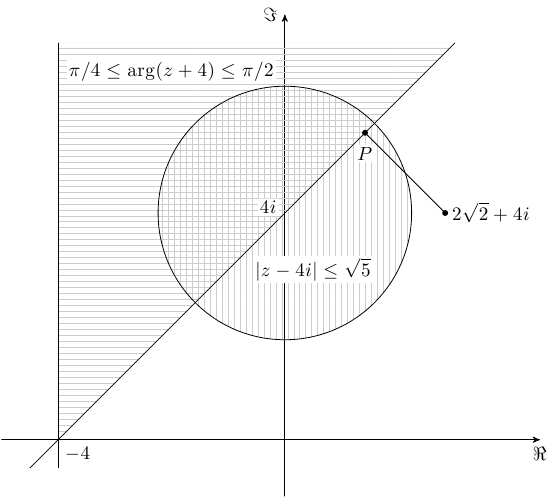Punch
- 44
- 0
Sketch on an Argand diagram the set of points satisfying both |z-4i|<=\sqrt{5} and \frac{\pi}{4}<=arg(z+4)<=\frac{\pi}{2}.
I have already sketched the 2 loci. The problem lies in the following part.
Hence find the least value of |z-2\sqrt{2}-4i|. Find, in exact form, the complex number z_1 represented by the point P that gives this least value.
I have already sketched the 2 loci. The problem lies in the following part.
Hence find the least value of |z-2\sqrt{2}-4i|. Find, in exact form, the complex number z_1 represented by the point P that gives this least value.
